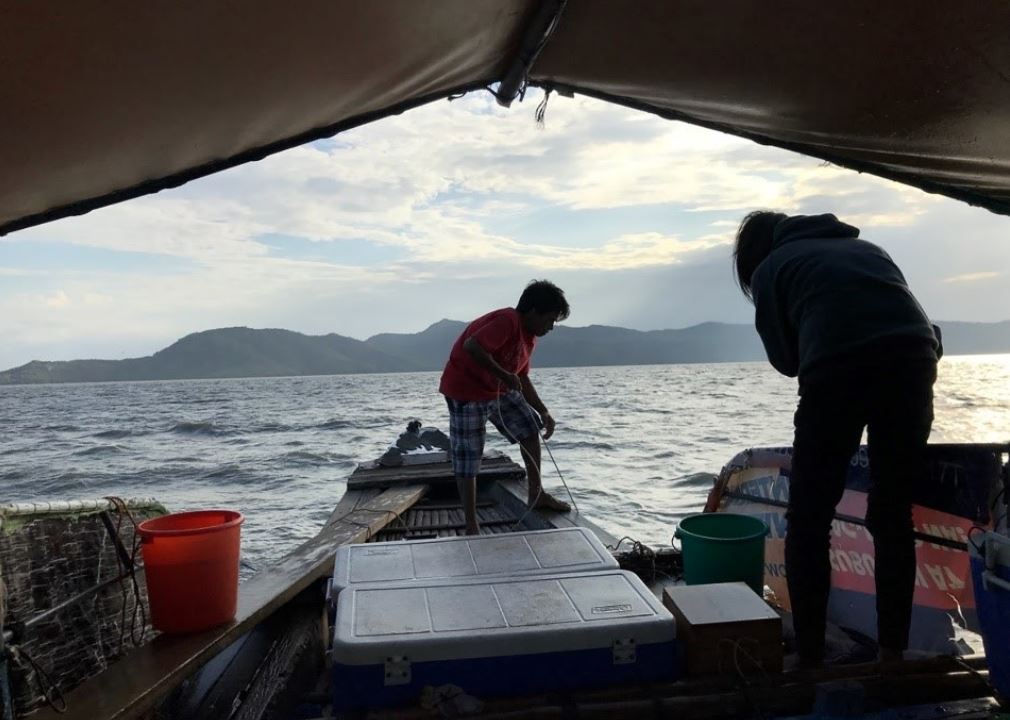
The Philippines’ lakes are set to benefit from scientific solutions developed through Department of Science and Technology (DOST) studies towards better water quality for aquaculture and fisheries industries.
The famous Taal Lake, Laguna Lake, and the Seven Crater Lakes of San Pablo City in Southern Tagalog will soon get the needed boost with the launch of the Center for Lakes Sustainable Development (CLSD), a new R&D center that will be funded by the Department of Science and Technology (DOST).
The center aims to develop solutions and strategies for effective management and sustainability of various lakes in the CALABARZON Region composed of the provinces of Cavite, Laguna, Batangas, Rizal, and Quezon beginning October 2021.
The project will be implemented by Assistant Professor Christian Paul P. de la Cruz of the Laguna State Polytechnic University in San Pablo City, Laguna. Co-implementing the project with Asst. Prof. de la Cruz are the following institutions:
1. CALABARZON local government units
2. Bureau of Fisheries and Aquatic Resources Region 4A
3. University of the Philippines Los Baños-School of Environmental Science and Management
4. University of the Philippines Diliman
5. Laguna Lake Development Authority
6. Southeast Asian Limnological Network, a non-profit organization
CLSD was made possible through the PHP 53 million funding support from the Niche Centers in the Regions for R&D (NICER) Program of the DOST. Under DOST’s umbrella program Science for Change Program, NICER Program stimulates R&D in the countryside by financing higher educational institutions in the regions to provide solutions to pressing problems and to address development needs in their areas through research and development activities.
Life in the lake
San Pablo City in Laguna is home to the Seven Crater Lakes: Bunot Lake, Calibato Lake, Mohicap Lake, Palakpakin Lake, Pandin Lake, Sampaloc Lake, and Yambo Lake.
About 33 kilometers away from San Pablo City lies Taal Lake which is embraced by both Batangas and Cavite.
Laguna Lake is land-locked by Metro Manila, Laguna, and Rizal. With Napindan Channel through the Pasig River as its only outlet, Laguna Lake remains the country’s largest freshwater lake and third in Southeast Asia.
All these lakes provide numerous ecological and economic services. Numerous communities depend on these sources of fresh water for their daily subsistence and livelihood, mainly for aquaculture and tourism.
At the same time, these lakes are home to unique organisms like tawilis in Taal Lake. Laguna Lake is also a natural resource for shrimps, snails, and fishes (bangus, tilapia, ayungin).
CLSD hopes to enhance the resilience and adaptation of these lake communities against the looming climate change phenomenon. Adding to that, the CLSD hopes to help in generating alternative income opportunities from selling eco-products and eco-tourism services; both of which are win-win solutions for the communities and local government that depend on the lakes.
With better lake water quality, which CLSD plans to manage, there comes the aspiration to come up with a better yield for aquaculture and capture fisheries.
More details about this soon-to-rise center will be revealed during the DOST’s Big 21 in 2021 launch on September 7, 2021, 10:00 AM to be broadcast at the DOST Philippines Facebook page, when other high-impact programs, projects, and R&D initiatives of the science agency such as the UP PGH, DOST study on virgin coconut oil as adjunctive therapy for COVID-19 that will be showcased despite the challenges brought about by the COVID-19 pandemic.
Good News Pilipinas is celebrating its 15th Anniversary in 2021 by giving away prizes! Subscribe to our Good News Pilipinas! TV YouTube channel and enter the raffle by sending us an email to editor@goodnewspilipinas.com
The post Philippines’ lakes to benefit from scientific solutions for water resource sustainability appeared first on Good News Pilipinas.

0 Comments